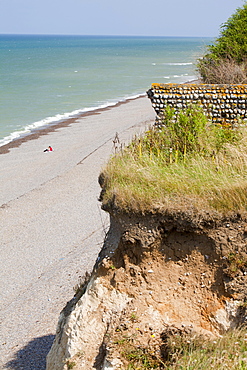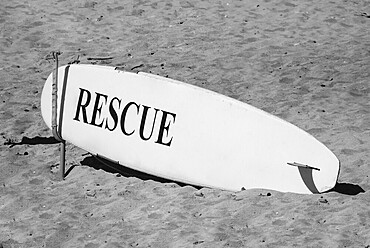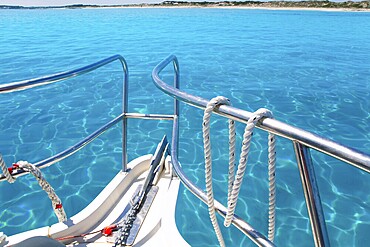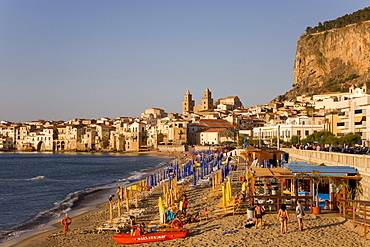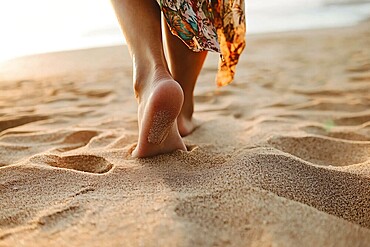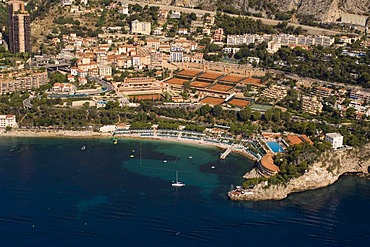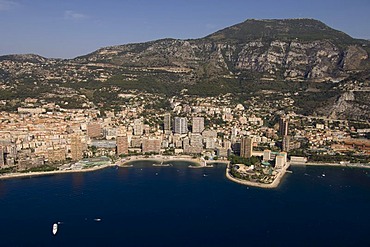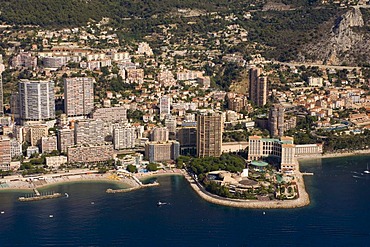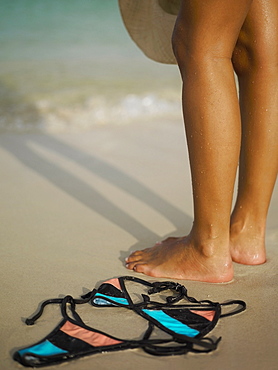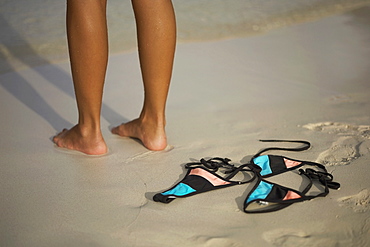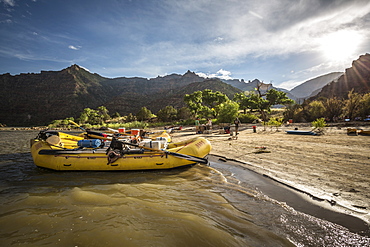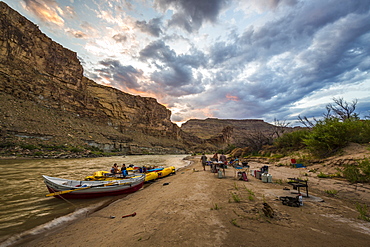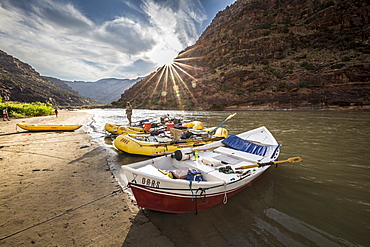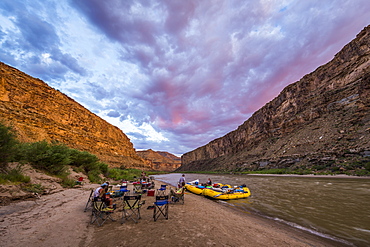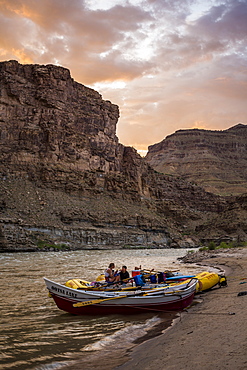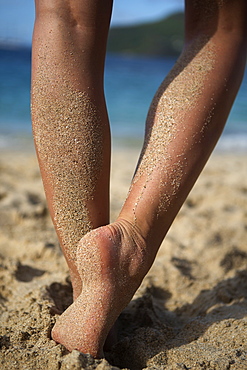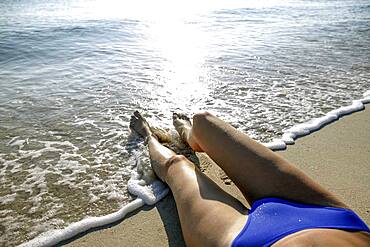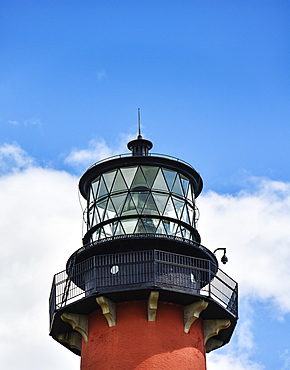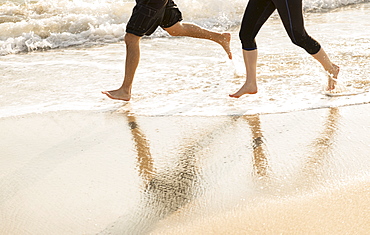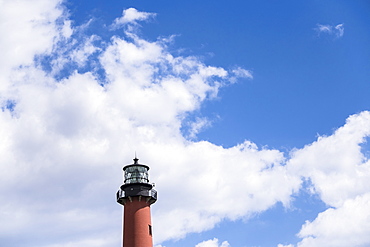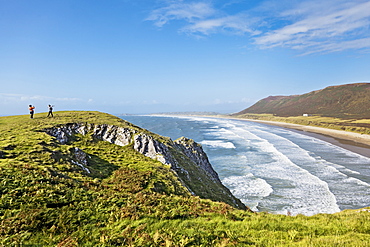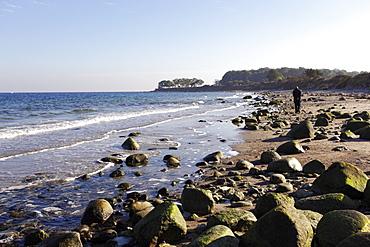Results
2 results found
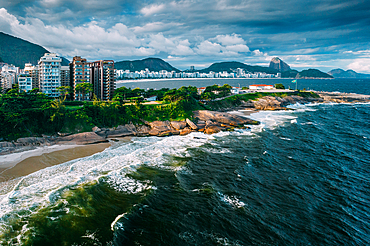
Aerial drone view of Arpoador section of Ipanema Beach with Copacabana and Sugarloaf Mountain visible in the background, Rio de Janeiro, Brazil, South America
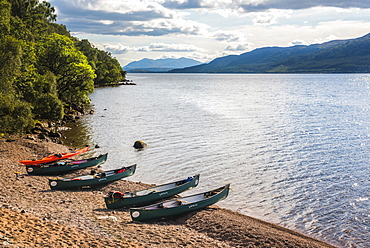
Canoeing Loch Ness section of the Caledonian Canal, near Fort Augustus, Scottish Highlands, Scotland, United Kingdom, Europe
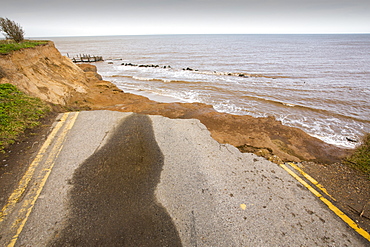
A road eroded and dropping off into the North sea at Happisburgh, Norfolk, a rapidly eroding section of coastline, UK.
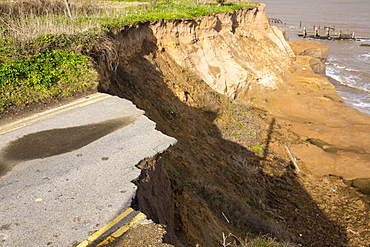
A road eroded and dropping off into the North sea at Happisburgh, Norfolk, a rapidly eroding section of coastline, UK.
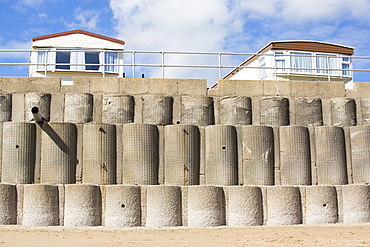
Concrete sea defences at Beach Bank Caravan Park in Ulrome near Skipsea on Yorkshires East Coast, UK. The coast is composed of soft boulder clays, very vulnerable to coastal erosion. This section of coast has been eroding since Roman times, with many villages having disappeared into the sea, and is the fastest eroding coast in Europe. Climate change is speeding up the erosion, with sea level rise, increased stormy weather and increased heavy rainfall events, all playing their part.
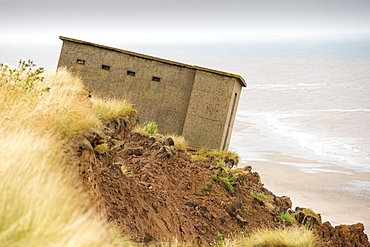
A Second world War lookout post leaning alarmingly and about to tumble over the edge of the cliff near Aldbrough on Yorkshires East Coast, UK. The coast is composed of soft boulder clays, very vulnerable to coastal erosion. This section of coast has been eroding since Roman times, with many villages having disappeared into the sea, and is the fastest eroding coast in Europe. Climate change is speeding up the erosion, with sea level rise, increased stormy weather and increased heavy rainfall events, all playing their part.
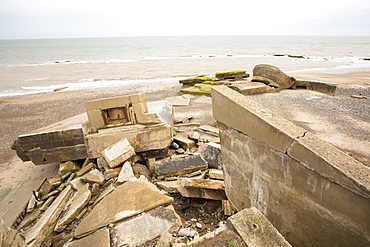
The Remains of the Godwin battery on the beach at Kilnsea at the head of Spurn point on Yorkshires East Coast, UK. Initially constructed during the First World War, the Godwin Battery was added to during the Second World War. It comprised of gun emplacements, search light, barracks, officers’ mess, and a hospital. This section of coastline is the fastest eroding coastline in Europe. The soft boulder clay cliffs are easily eroded and have been eroding since Roman Times, but recently the climate change impacts of increased stormy weather, increased heavy rainfall events and sea level rise have accelerated the rate of erosion. The average rate of attrition is 1.5metres per year, last year it was 5 metres.
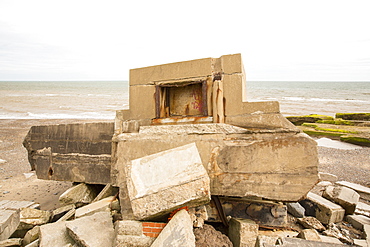
The Remains of the Godwin battery on the beach at Kilnsea at the head of Spurn point on Yorkshires East Coast, UK. Initially constructed during the First World War, the Godwin Battery was added to during the Second World War. It comprised of gun emplacements, search light, barracks, officers’ mess, and a hospital. This section of coastline is the fastest eroding coastline in Europe. The soft boulder clay cliffs are easily eroded and have been eroding since Roman Times, but recently the climate change impacts of increased stormy weather, increased heavy rainfall events and sea level rise have accelerated the rate of erosion. The average rate of attrition is 1.5metres per year, last year it was 5 metres.
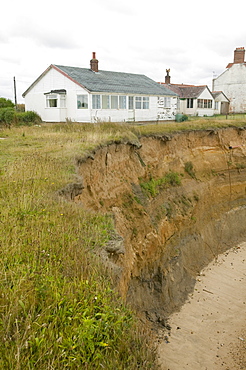
Happisburgh on the fastest eroding section of the UK coast, Norfolk, England, United Kingdom, Europe
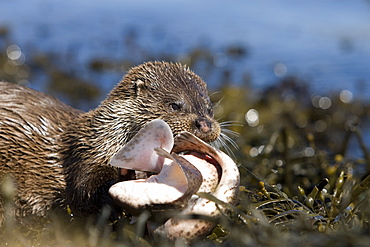
Eurasian river otter (Lutra lutra) eating Greater spotted dogfish (Scyliorhinus stellaris). The otter took only the innards of the dogfish by opening a short section of skin behind the pectoral fin (see images under 'Greater spotted dogfish'). The rest of the fish, still alive, was left on the shore and never retrieved. Perhaps the tough shark skin and battling fish are too much work when other food is plentiful? Hebrides, Scotland
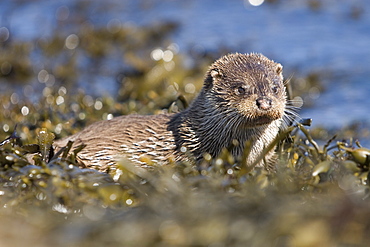
Eurasian river otter (Lutra lutra) having caught Greater spotted dogfish (Scyliorhinus stellaris). The otter took only the innards of the dogfish by opening a short section of skin behind the pectoral fin (see images under 'Greater spotted dogfish'). Hebrides, Scotland (RR)
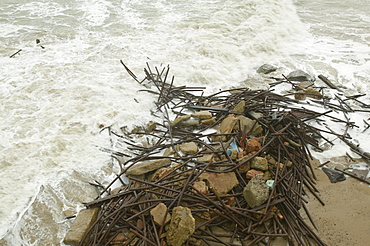
Waves crashing against debris on beach at Happisburgh on the fastest eroding section of the UK coast, Norfolk, England, United Kingdom, Europe
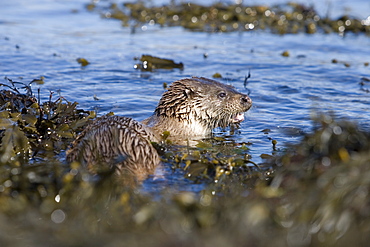
Eurasian river otter (Lutra lutra) having caught Greater spotted dogfish (Scyliorhinus stellaris). The otter took only the innards of the dogfish by opening a short section of skin behind the pectoral fin (see images under 'Greater spotted dogfish'). The rest of the fish, still alive, was left on the shore and never retrieved. Perhaps the tough shark skin and battling fish are too much work when other food is plentiful? Hebrides, Scotland

Happisburgh on the fastest eroding section of the UK coast, Norfolk, England, United Kingdom, Europe
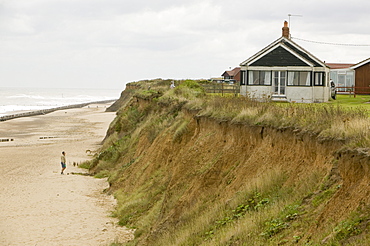
Beach near Happisburgh on the fastest eroding section of the UK coast, Norfolk, England, United Kingdom, Europe
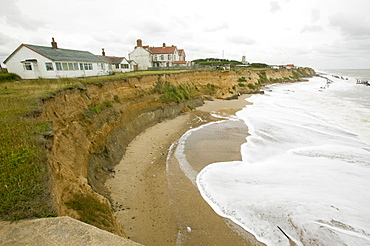
Happisburgh on the fastest eroding section of the UK coast, Norfolk, England, United Kingdom, Europe
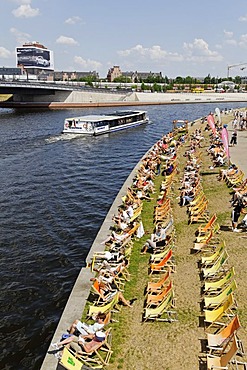
Capital Beach Bar on the bank of the Spree River, Regierungsviertel, government quarter, Berlin, Germany, Europe
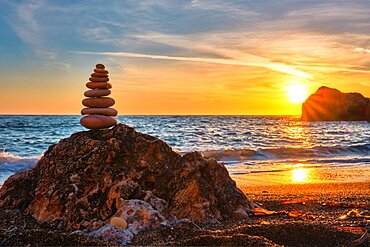
Concept of balance and harmony. Cairn stack of stones pebbles cairn on the beach coast of the sea in the nature on sunset. Meditative art of stone stacking
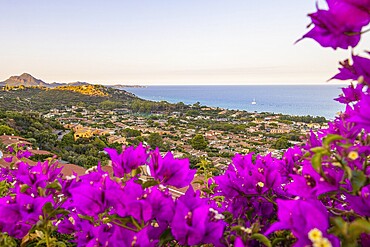
From the hilly hinterland you have an unobstructed view over the Costa Rei, a south-eastern coastal section of the Italian Mediterranean island of Sardinia, Sardinia, Costa Rei, Italy
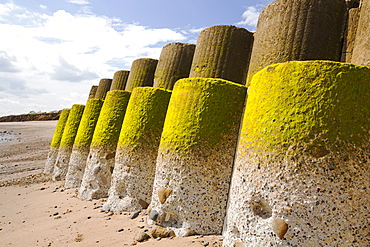
Smashed concrete sea defenses at Ulrome near Skipsea on Yorkshires East Coast, UK. The sea has eroded past the barriers and left them stranded further down the beach. The coast is composed of soft boulder clays, very vulnerable to coastal erosion. This section of coast has been eroding since Roman times, with many villages having disappeared into the sea, and is the fastest eroding coast in Europe. Climate change is speeding up the erosion, with sea level rise, increased stormy weather and increased heavy rainfall events, all playing their part.
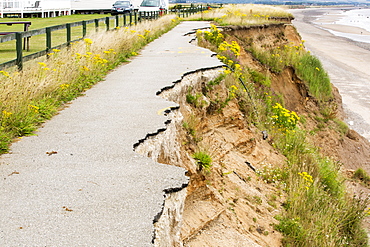
A collapsed coastal road at Barmston on Yorkshires East Coast, near Skipsea, UK. The coast is composed of soft boulder clays, very vulnerable to coastal erosion. This section of coast has been eroding since Roman times, with many villages having disappeared into the sea, and is the fastest eroding coast in Europe. Climate change is speeding up the erosion, with sea level rise, increased stormy weather and increased heavy rainfall events, all playing their part.
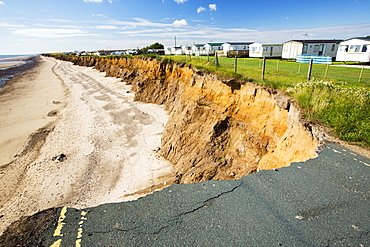
A collapsed coastal road at between Skipsea and Ulrome on Yorkshires East Coast, near Skipsea, UK. The coast is composed of soft boulder clays, very vulnerable to coastal erosion. This section of coast has been eroding since Roman times, with many villages having disappeared into the sea, and is the fastest eroding coast in Europe. Climate change is speeding up the erosion, with sea level rise, increased stormy weather and increased heavy rainfall events, all playing their part.
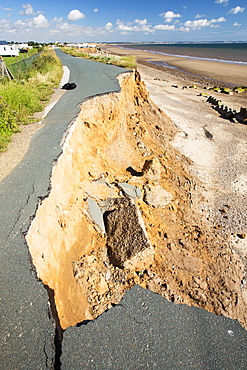
A collapsed coastal road at between Skipsea and Ulrome on Yorkshires East Coast, near Skipsea, UK. The coast is composed of soft boulder clays, very vulnerable to coastal erosion. This section of coast has been eroding since Roman times, with many villages having disappeared into the sea, and is the fastest eroding coast in Europe. Climate change is speeding up the erosion, with sea level rise, increased stormy weather and increased heavy rainfall events, all playing their part.
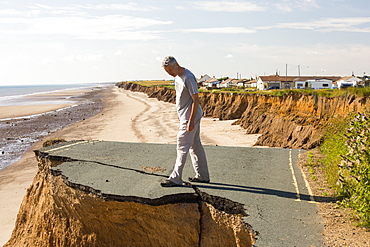
A collapsed coastal road at between Skipsea and Ulrome on Yorkshires East Coast, near Skipsea, UK. The coast is composed of soft boulder clays, very vulnerable to coastal erosion. This section of coast has been eroding since Roman times, with many villages having disappeared into the sea, and is the fastest eroding coast in Europe. Climate change is speeding up the erosion, with sea level rise, increased stormy weather and increased heavy rainfall events, all playing their part.
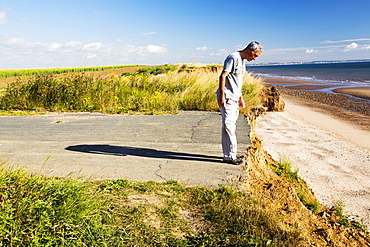
A collapsed coastal road at near Aldbrough on Yorkshires East Coast, near Skipsea, UK. The coast is composed of soft boulder clays, very vulnerable to coastal erosion. This section of coast has been eroding since Roman times, with many villages having disappeared into the sea, and is the fastest eroding coast in Europe. Climate change is speeding up the erosion, with sea level rise, increased stormy weather and increased heavy rainfall events, all playing their part.
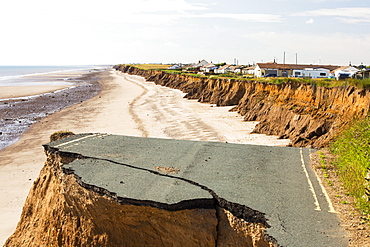
A collapsed coastal road at between Skipsea and Ulrome on Yorkshires East Coast, near Skipsea, UK. The coast is composed of soft boulder clays, very vulnerable to coastal erosion. This section of coast has been eroding since Roman times, with many villages having disappeared into the sea, and is the fastest eroding coast in Europe. Climate change is speeding up the erosion, with sea level rise, increased stormy weather and increased heavy rainfall events, all playing their part.
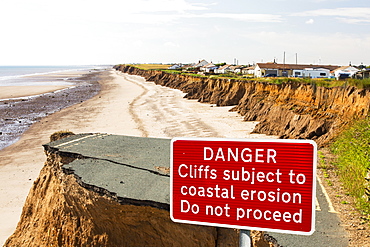
A collapsed coastal road at between Skipsea and Ulrome on Yorkshires East Coast, near Skipsea, UK. The coast is composed of soft boulder clays, very vulnerable to coastal erosion. This section of coast has been eroding since Roman times, with many villages having disappeared into the sea, and is the fastest eroding coast in Europe. Climate change is speeding up the erosion, with sea level rise, increased stormy weather and increased heavy rainfall events, all playing their part.
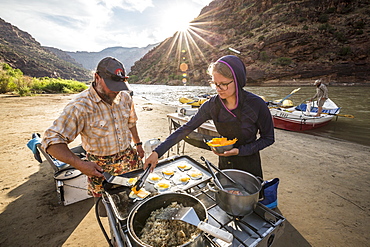
Two rafting guides cooking a meal at camp while on a Green river rafting trip, ?Desolation/Gray?Canyon section, Utah, USA
